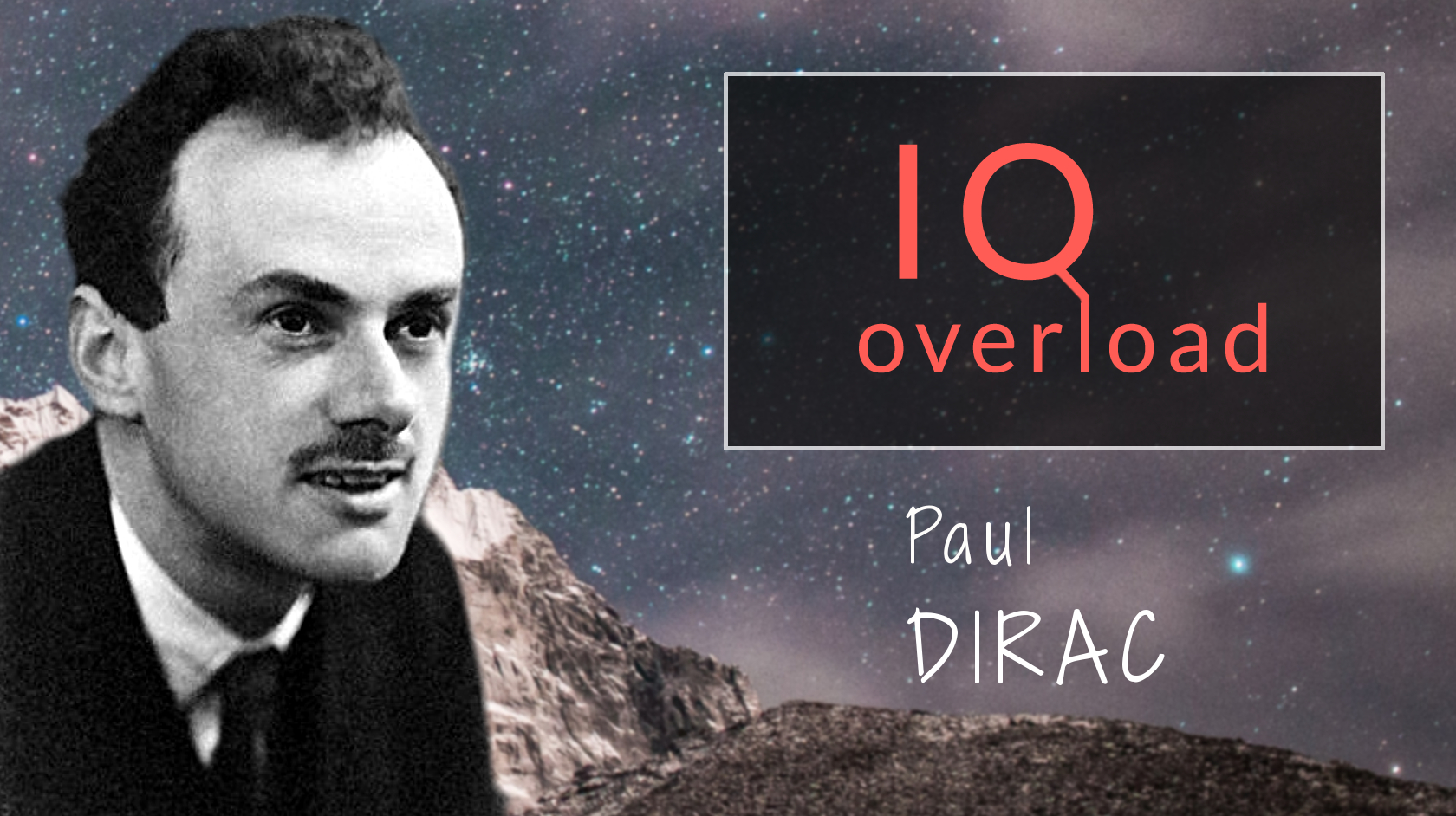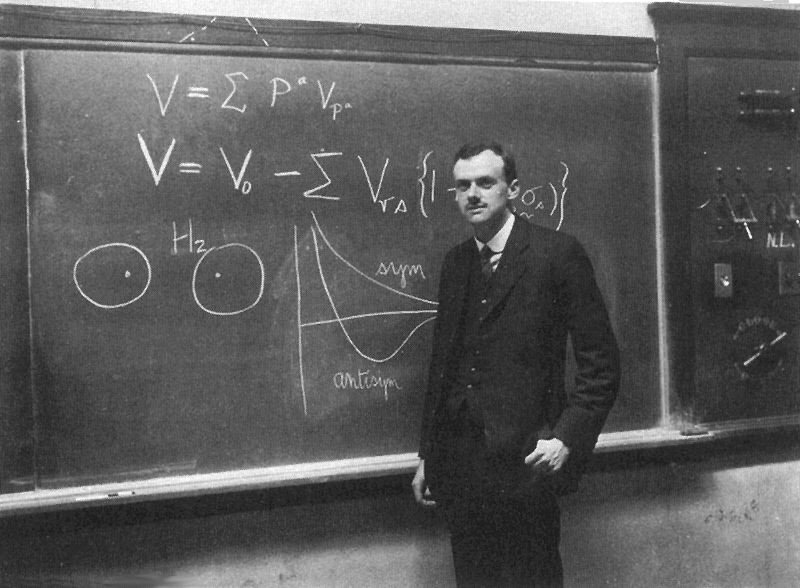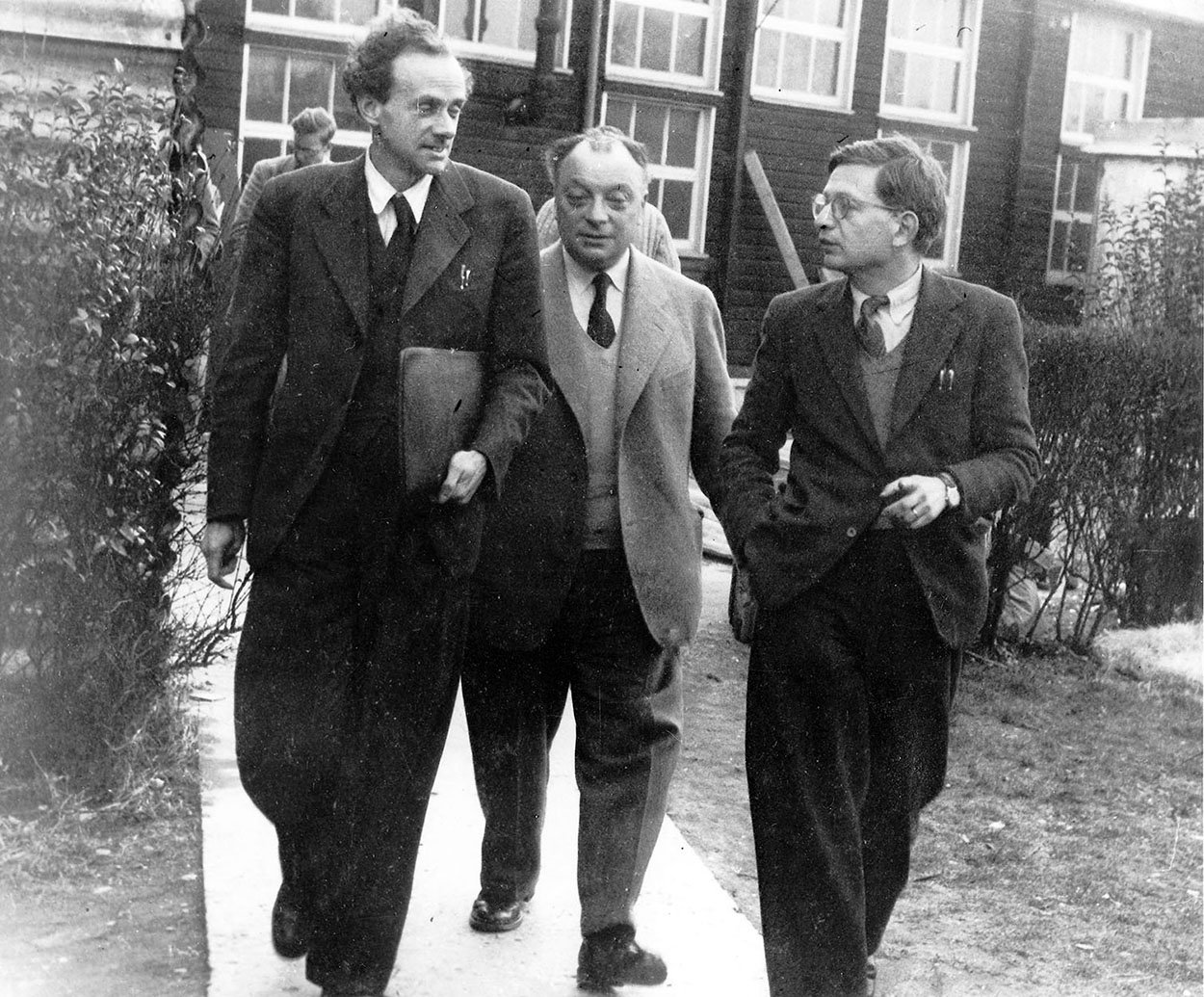Is it possible that one of the most important scientists in the history was an introvert? Doesn't it interfere with communication with other scientists? Well, it turns out that answer to both questions is yes, and Paul Dirac will help you understand, how it is even possible.

An introvert who predicted the existence of antimatter

image credits: Wikimedia
Early years
Paul Dirac was born on 8 August 1902, in Bristol, England. His youth was determined by his Swiss father - Charles Adrien Ladislas Dirac, who was really strict and authoritarian. Paul was unhappy not only in the home, but also in school, where Charles was teaching French. Paul's father forced him and his siblings to speak to him only in French because he wanted them to learn this language. So when young genius didn't know how to express his thoughts in French, he remained silent.
Dirac became an introvert, who expressed his thoughts as precisely as possible and didn't like to use too many words. We can clearly say that the situation in his home was the reason he grew up into an introvert. His relations with the father can be summarized by the sentence he wrote after his death: "I feel much freer now, and I am my own man.".
Paul Dirac studied electrical engineering at the University of Bristol because his father wanted him to do so. However, after graduation he didn't find employment, so he studied mathematics for two more years. During this time Einstein's theory of relativity became popular and Dirac started learning it on his own. The result of self-teaching was joining the University of Cambridge as a research student in 1923.
Quantum mechanics or/and relativity
Dirac's career on quantum mechanics started in 1925 when his adviser from Cambridge, Ralph Fowler, showed him a proof copy of Heisenberg's research paper, which led to matrix formulation of quantum mechanics. By this time, the weird nature of the subatomic world was tried to be bridled by great scientists that I have already written about. The remaining part was a mathematical description of this world. Matrix mechanics created by Werner Heisenberg, Max Born, and Pascual Jordan was a big step forward. At the same time, in 1926, Paul Dirac mastered Heisenberg's ideas he read about in the research paper and wrote a Ph.D. thesis on this topic.
1926 was a huge year for quantum mechanics. Not only matrix mechanics was released, but also wave mechanics by Erwin Schrödinger. But there was a serious problem - Schrödinger's equation was incompatible with Einstein's theory of relativity - in this equation, the evolution of particle was tracked only by one frame reference. So it works only for slow moving objects, what is kind of problem when particles move at speed close to the speed of light.
Although Paul Dirac declared that quantum mechanics is complete, he wasn't satisfied with the fact that particles behavior at high speed is not mathematically described yet. So he started research on relativistic quantum mechanics, what led to an equation he had been rewarded a Nobel Prize in 1933 for - the relativistic wave equation for the electron. The first version didn't look neat. Dirac believed in the simple and pretty mathematical description of the world, so he couldn't leave it in this form. In order to do so, he used a combination of four wave functions instead of two and new quantities - spinors. The result was brilliant - his relativistic wave equation was just beautiful, but... He had no idea what these two extra components mean. Also, they didn't make much physical sense, as they had to have negative values of energy. However, his equation predicted the motion of electrons at any speed, so these extra components had to be there.

Photo by Thierry Meier on Unsplash
Dirac sea
Imagine a sea, but instead of water filled with an infinite amount of electrons with negative energy. This sea is the whole universe. These electrons have all of the negative energy states that are possible - from 0 to negative infinity. The only way we could interact with an electron is the situation when one has positive energy, so it stays on the top of the sea.
What would happen if we removed one electron from this universe? It leaves a hole, what should act like... a particle with opposite electric charge to the electron. Paul Dirac suggested that this 'hole' should be identified with proton, but soon after that other physicists realized that this 'hole' has to have the same mass as the electron. Proton is a much heavier. Dirac proposed the existence of the new elementary particle, with the same mass as an electron, but opposite charge. Initially, the physicists were skeptical, but just one year later American scientist Carl Anderson discovered anti-electron (positron) in cosmic rays.
Sound of silence
As I mentioned before, Paul Dirac wasn't talkative. His colleagues in Cambridge even defined a new unit called a "dirac", which was equal to one word per hour. His personality also led to some funny situations, for example during the journey with Werner Heisenberg in 1929 Dirac asked his comrade:
Why do you dance?Heisenberg replied:
When there are nice girls, it is a pleasureafter about five minutes the introvert genius finally asked:
But, Heisenberg, how do you know beforehand that the girls are nice?
Another funny situation was at the time of the first meet of Richard Feynman and Paul Dirac at a conference. After, of course, a long silence, Dirac asked: "I have an equation. Do you have one too?".
This kind of situations combined with his achievements are a little bit weird. How could a guy with such a personality become a Nobel Prize winner? He had to collaborate with other scientists, how did he talk to them? It turns out that Dirac had few, but very close friends. People actually liked him and the sound of silence wasn't too bad.
Later life
In 1932 Paul Dirac became Lucasian Professor of Mathematics at Cambridge. One year later, as I have already mentioned before, the father of anti-matter received a Nobel Prize in physics “for the discovery of new productive forms of atomic theory”.
Being an introvert didn't stop him to marry Margit “Manci” Wigner, the sister of the Hungarian-American physicist Eugene Wigner. There is actually another funny story: once upon a time a friend/student (there are different versions of this story) came to Dirac's house and (as he didn't know about a marriage) he was quite surprised. When Dirac saw his face, he said: "This is... this is Wigner's sister".
In his later life he contributed a lot to modern theoretical physics terminology. Dirac also proposed a cosmological model based on the large numbers hypothesis. It was not widely accepted, but it inspired many post-war physicists.
Till his death in 1984 he wasn't happy with his discoveries and thought that much had to be improved, especially in the field of relativistic quantum mechanics.
Summary

Paul Dirac, Wolfgang Pauli and Rudolf Peierls, 1953
[image credits: Wikimedia]
Paul Dirac was another brilliant 5th Solvay Confference participant who received a Nobel Prize. He contributed both to quantum mechanics of slow speeds and to relativistic quantum mechanics. The situation in his family home caused his introvercy, but even with this personality he found friends and a wife. He believed that our world is describable by simple and beautiful mathematical equations, what led to antimatter discovery. Even though he achieved so much, he died dissatisfied with his achievements.
References:
- more about Paul Dirac:
- more about Dirac equation:
- more about Dirac sea:
0. IQ overload: the story of one photo
1. IQ overload: Maria Skłodowska-Curie
2. IQ overload: Niels Bohr
3. IQ overload: Albert Einstein
4. IQ overload: Werner Heisenberg
5. IQ overload: Erwin Schrödinger
6. IQ overload: Max Planck
7. IQ overload: Louis de Broglie
8. IQ overload: Arthur Compton
9. IQ overload: Max Born
10. IQ overload: Paul Dirac
Bonus parts:
#2017 IQ overload: Barry Barish, Rainer Weiss and Kip Thorne
Do you like science? Check out #steemSTEM content and join us on #steemSTEM chat!
